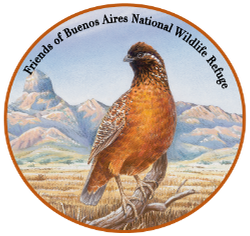Among Friends. 21 April 2021. Rufous-crowned Sparrow
by Walt Anderson
Beginning birders sometimes despair at the diversity and relatively subtle color patterns of sparrows, though some are obvious: White-crowned, Black-throated, and Lark Sparrows are strikingly marked and fairly easy to identify. Juncos are actually sparrows, but the racial variation among them can be tricky at first. Towhees are a group of large sparrows, but even they often throw off the novice.
As you get more familiar with birds, you can begin to appreciate the subtle beauty of sparrows, and I want to feature one of the most interesting, if least known: the Rufous-crowned Sparrow. Birds of the World, the most authoritative source on bird biology, says the following: “It has probably been ignored because of its secretive habits and its predilection for inaccessible arid, brushy, and rock-covered slopes. To conduct field studies of Rufous-crowned Sparrows will require ingenuity, determination, keen observational skills, and luck to achieve success. Basic descriptive studies are needed to address data gaps that exist in nearly all aspects of the life history of this species.”
I happen to like “inaccessible arid, brushy, and rock-covered slopes,” and I have had the good fortune to spend a lot of time watching and photographing this elusive species. Let me introduce you to this little-known bird that usually escapes our notice and thus concern.

The Rufous-crowned Sparrow is a sparsely distributed resident species on dry hillsides of the Southwest and Mexico. It is not a flocking migrant like the sometimes abundant White-crowned and Chipping Sparrows. As it tends to stick close to the rocks and protective vegetation, you may get no more than a glimpse of a fairly plain bird scurrying along like an avian mouse. You may note the rusty cap and mistake it for a small version of a Canyon Towhee. In fact, it is more closely related to towhees and to Neotropical brush-finches and ground-sparrows than to the rest of our North American sparrows.
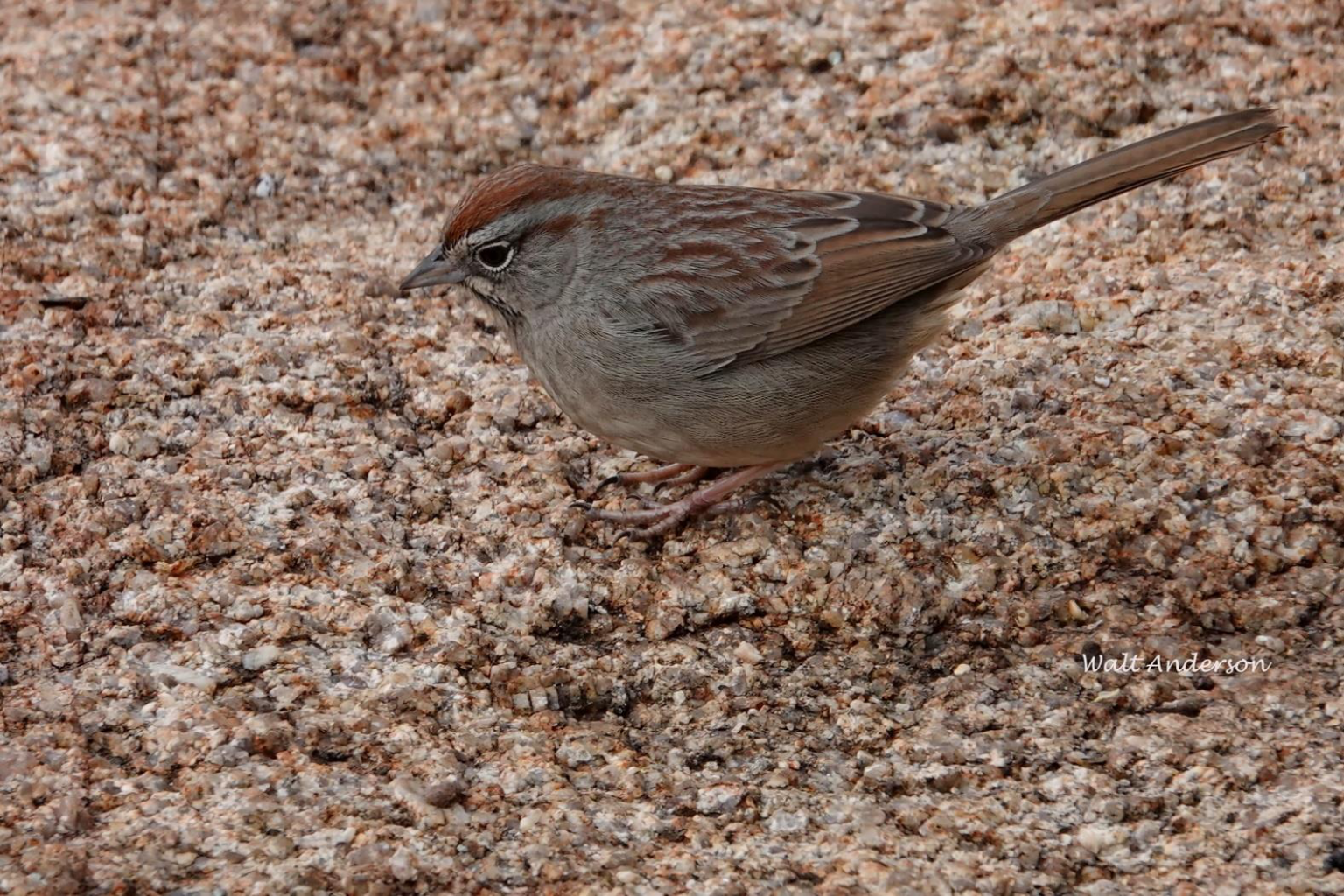
If you are lucky or patient enough to get a good luck at one, you can see the rusty cap (not unique to this sparrow, however), white eyering on a gray face, rusty back stripes, grayish underparts that are unstreaked, and a fairly long, rounded tail.
●●●
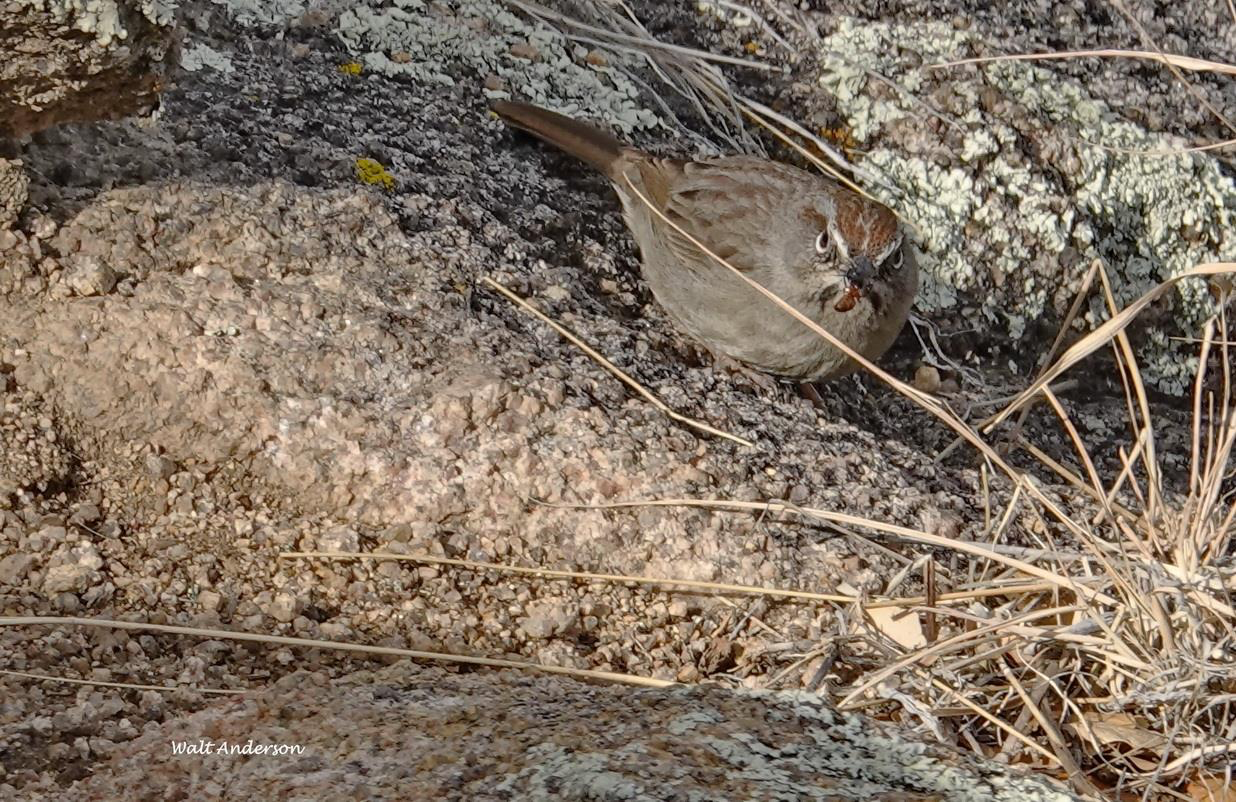
Behavior is a good clue, as the bird is a rock-lover, often creeping through crevices and under boulders almost like a Canyon Wren as it searches for invertebrates and also foraging in dense grasses and forbs as it seeks the seeds and succulent parts of plants.
●●●
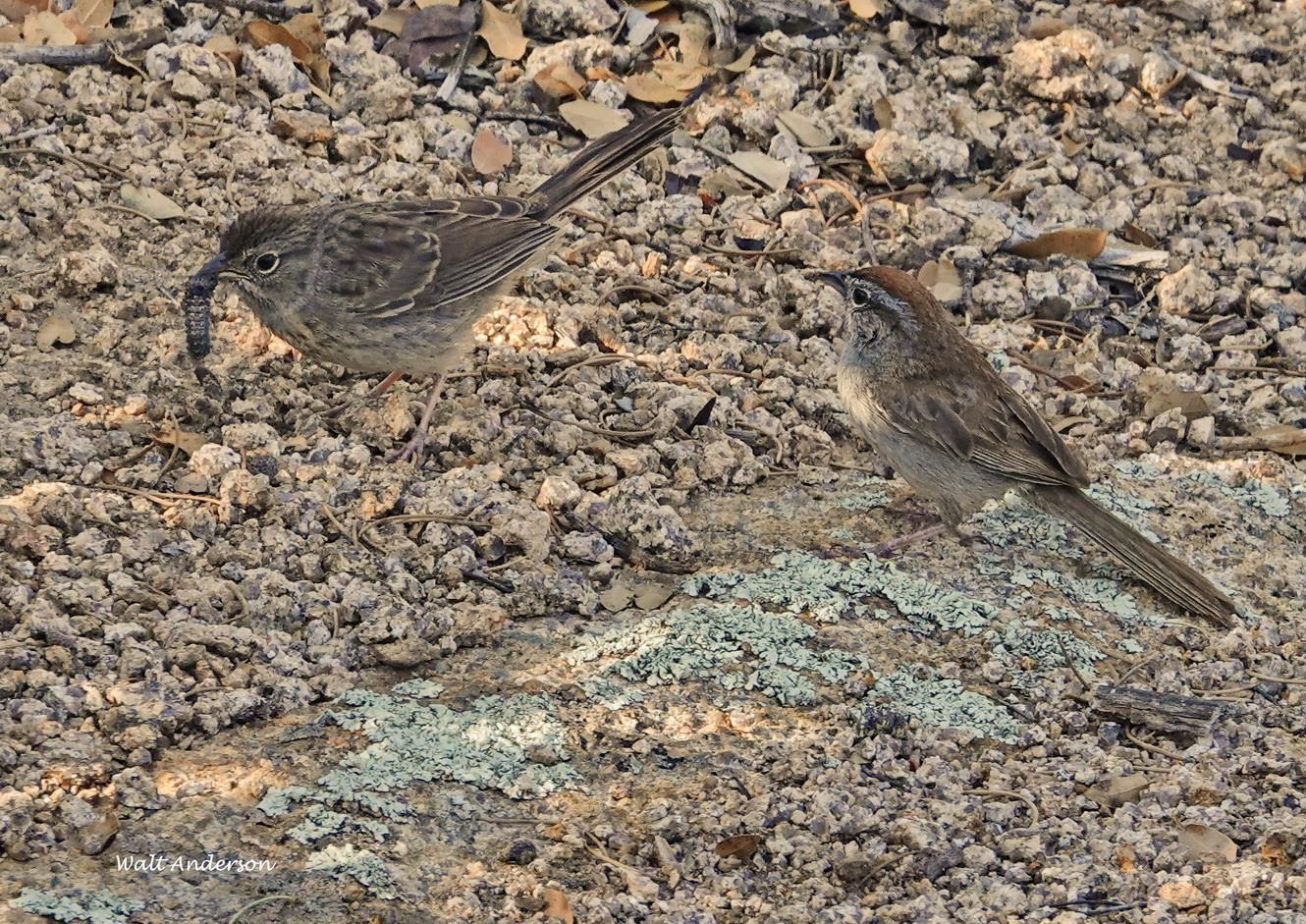
Insects and spiders are a larger part of its diet in the summer, especially when it faces the nutritional challenges of nesting and then providing good protein to the fledglings. The young, duller and striped underneath, will beg to the parents for food. This baby has been well taken care of.
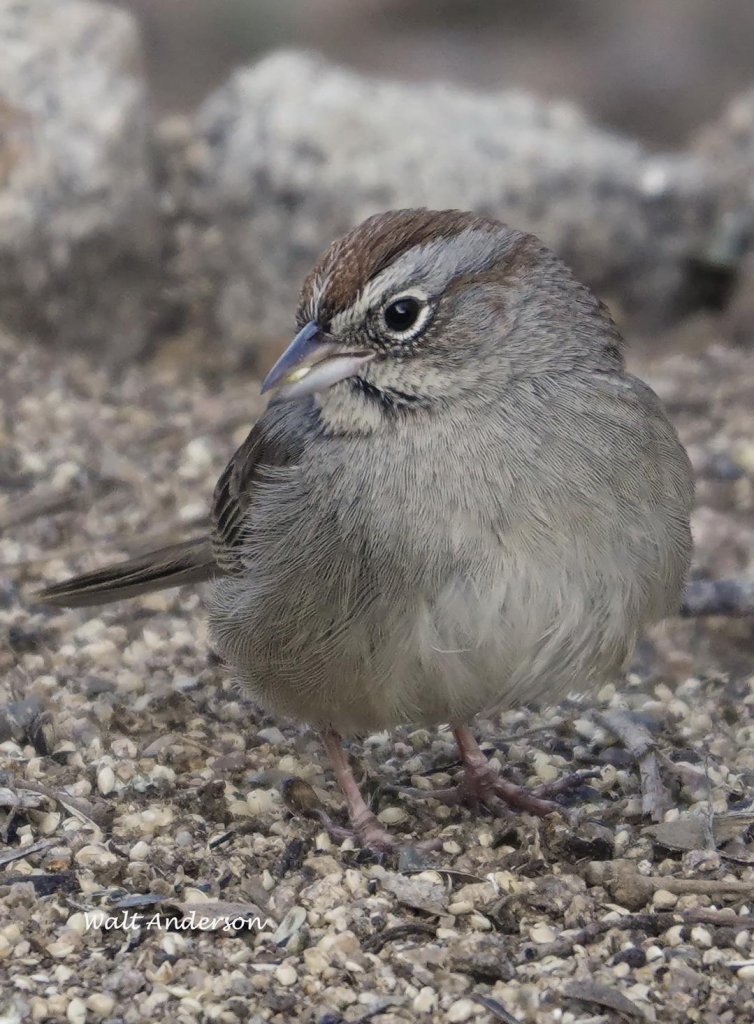
Here a Rufous-crowned Sparrow enjoys a seed, its most typical food, though this seed came in Select Blend from Jay’s Bird Barn in Prescott! A little supplemental food can make a difference in a drought year like this one when native plants produced little to no seeds at all.
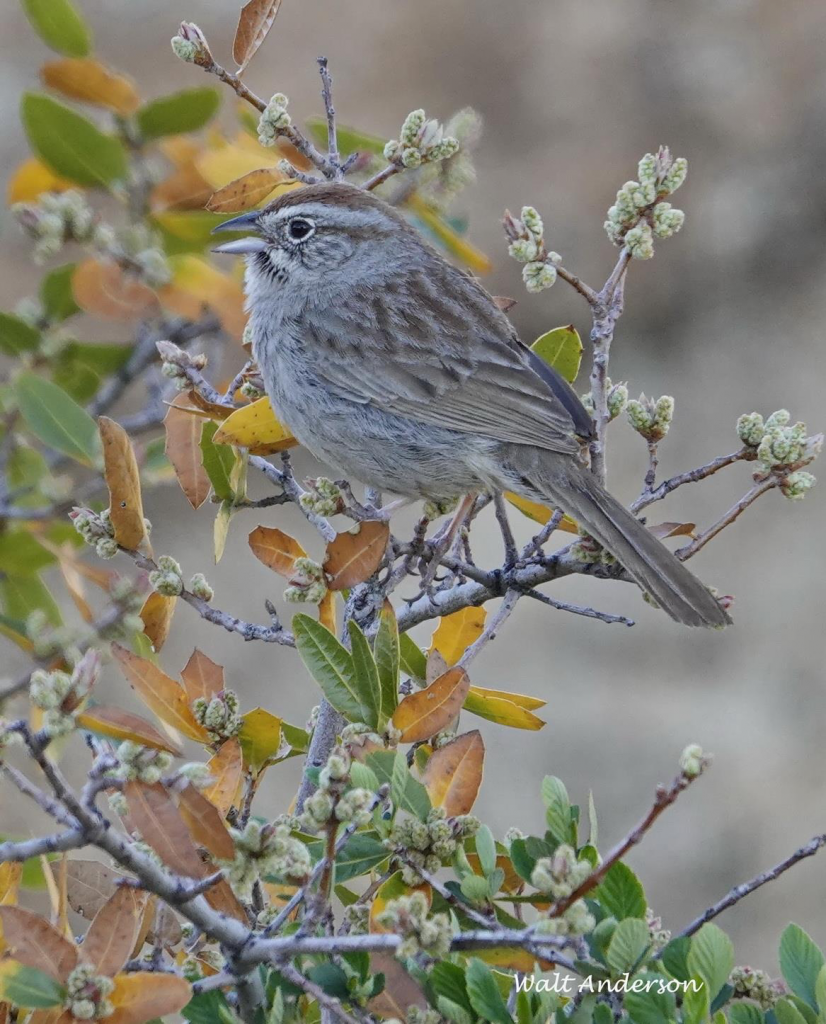
Often the “dear dear dear” plaintive call note of alarm is what alerts us to its presence. In spring, males give a lovely song that expert Rick Wright refers to as “rather quiet but sustained, a series of rapidly delivered chips and lisps like a handful of tiny pebbles tossed down a slope.”
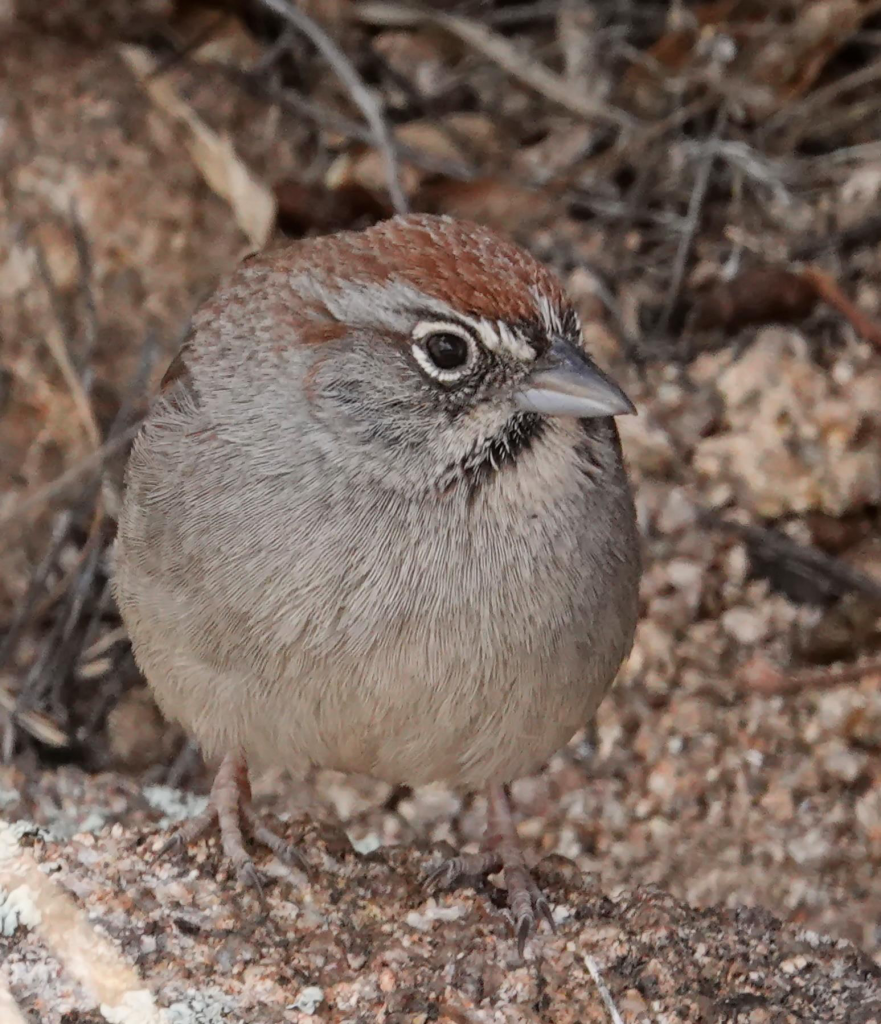
It’s not easy to get a frontal portrait like this of a quickly moving sparrow.

A more typical shot! Many shots end up in the digital dust bin, but this one pleases me to no end—a lucky accident.
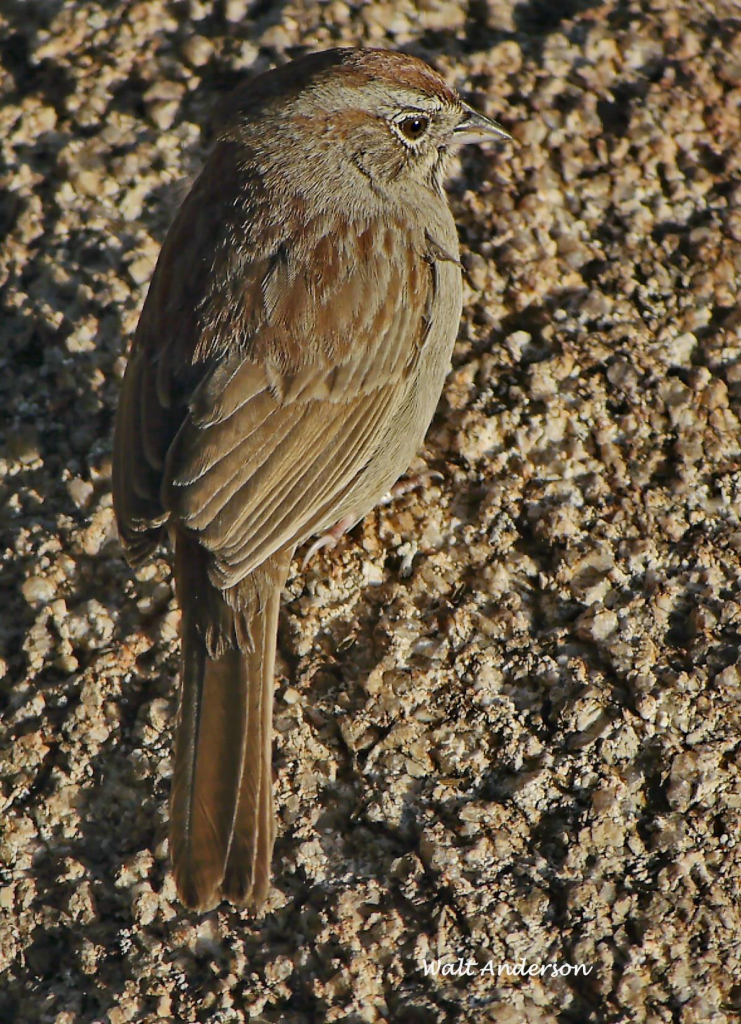
Arizona is seeing too much of its “inaccessible arid, brushy, and rock-covered slopes” destroyed by construction of roads and subdivisions, particularly the pernicious style of “mass grading” (which deserves a grade of F!). Even innocent and shy resident birds like the Rufous-crowned Sparrow fall victim to loss of habitat like this. I strongly urge us all to support protection of large blocks of contiguous habitat like that in the much-loved Granite Dells of Prescott.
